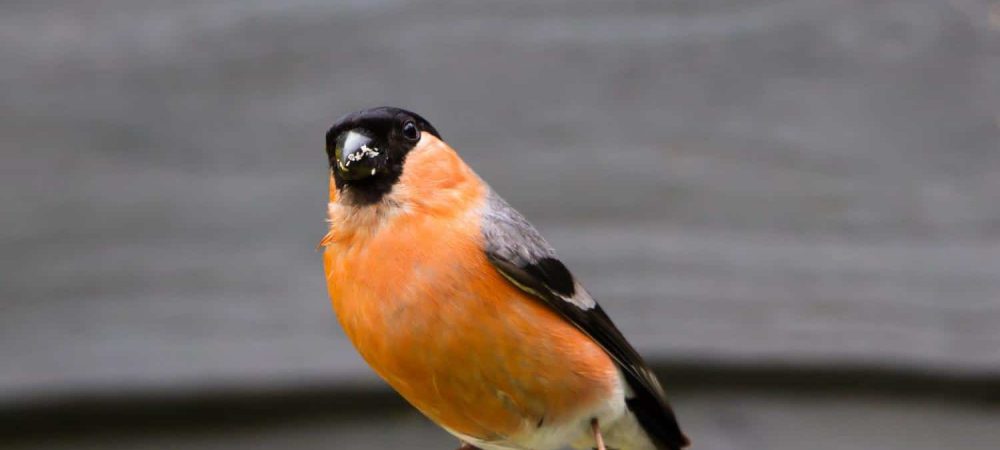
In the state of Arkansas you may encounter five different species of finches.
Table of Contents
ToggleThese finches are:
- House Finch
- Purple Finch
- American Goldfinch
- Pine Siskin
- Evening Grosbeak
Want to learn more? This book on everything to do with Finches is a fantastic read!
In terms of habitats, Arkansas is one of the best places for birds in the United States, with a wide range of forests and wetlands throughout.
It’s close enough to America’s southern border and the Gulf of Mexico that at least some of the equatorial heat reaches there in winter; and it’s just inland and temperate enough to serve as breeding grounds for animals who live in the trees.
Finches are one such animal, and there are many, just as there are many towering pines in the appropriately-named “Natural State”. This list presents the breeds of finch commonly found in Arkansas:
Want to attract finches? Take a look at our article!
What Finches can be seen in Arkansas?
Table of Contents
1. House Finch
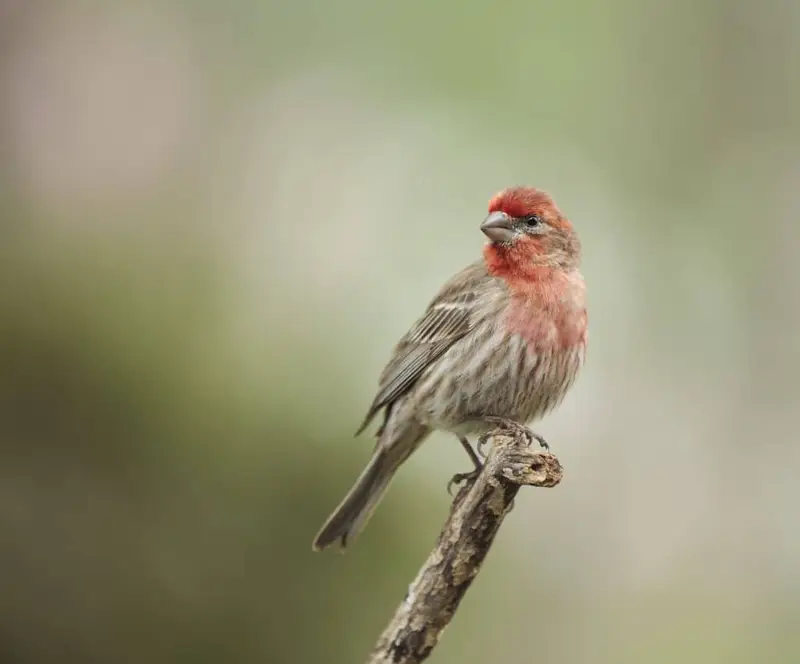
William Whitehead, XC629127. Accessible at www.xeno-canto.org/629127.
Fun Facts:
- A finch’s diet is dependent on the type of beak they have. House Finches have a seed feeding beak as seeds are their main source of food. The most popular seed for them is the black oil sunflower seed. They also eat certain types of flower buds and fruits, these incluce cherries and thistle.
- House Finches are only very small birds with a small weight range. They range from 16-27g and have only a tiny wingspan of 20-25cm.
The name of this finch is because it was domesticated up until the early 20th century in New York City, when it became illegal to own one and they spread through the US.
Easily mistaken for the purple finch, male house finches have a similar rose-colored plumage around the face and neck with browns throughout its body.
Female house finches have a similar brown pattern, except with less white and more light brown than purple finches.
While house finches are still among the most domesticated flying birds, they are not opposed to living out their lives in the tall conifers of places like the White River.
These birds often overwinter in Arkansas, burrowing into secluded nests while they wait out the cold; these nests are often in residential backyards, however.
Like all finches, the catch with house finches abundance is that they are easy to miss and hard to track, since most of them are only around five inches long and weigh less than an ounce.
2. Purple Finch
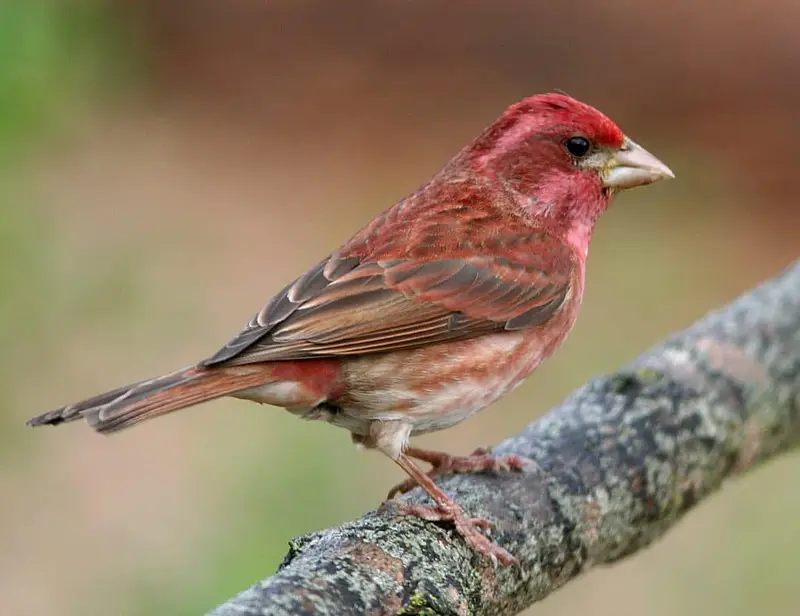
Peter Ward and Ken Hall, XC598463. Accessible at www.xeno-canto.org/598463.
Fun Facts:
- These birds have bills that are designed for breaking different seeds open. Their favourite seeds include black oil sunflower seeds and safflower seeds. They also enjoy eating nectar and occasionally consume flower buds.
- Purple Finches weigh just slightly more than House Finches at 18-32g. They also have very small wingspans which range from 22-26cm.
These fickle birds inhabit Arkansas in irregular patterns, absent one winter and abundant the next.
This is not uncommon in smaller birds who are more susceptible to cold. Physically, the male is ‘purple’ in the figurative sense, as it is usually closer to rose in the face and neck with browns featuring elsewhere.
Old-time naming conventions likely had no variation for rose and opted for the closest color they had.
Females are mostly brown, with white streaks above the eyes, white stomachs, and white accents throughout. Purple finches are not shy around civilization.
In fact, they are the typical backyard pet who frequent the same bird feeders if residents keep them stocked. Finches eat food from all groups, including nuts, seeds, worms, bugs, and berries.
They favor conifers when given a choice, generally look for the places where they can breed in peace, free of predators and other small birds who may try to move in on their bounties.
3. American Goldfinch
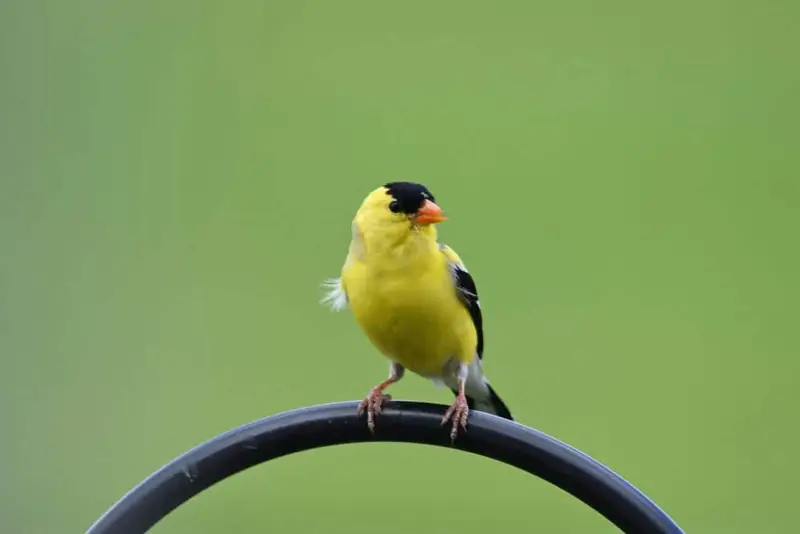
Russ Wigh, XC610948. Accessible at www.xeno-canto.org/610948.
Fun Facts:
- American Goldfinches have a beak designed for eating small seeds. Nyjer seeds being a favourite of theirs. They rarely eat anything outside of the seed family.
- These finches are slightly smaller than the other finches that we’ve looked at, weighing only 11-20g. They also have a very tiny wingspan which measure 19-22cm.
The goldfinch has received a bit of celebrity with the incredibly popular book and movie bearing its name.
Goldfinches change colors from their subdued, golden tones to bright lemon yellow when they want to attract a mate. Males have prominent black andwhitre streaks across the shoulders that run over the top of their beaks.
Like most finches, these are backyard feeders that can easily be lured with small seeds and nuts, or they’ll just build a nest in a tree lot if sufficient space is provided.
In nature, American goldfinches reside in shrubs and tall conifers like most of their kin, but they are a bit more earthbound in their foraging.
These are social birds who often gather near one another for strength in numbers and familial comfort, so if you spot one, chances are there are others nearby.
Mating season is obviously the best time to spot a goldfinch in all its glory, as those radiant yellow plumes shine brightest.
4. Pine Siskin
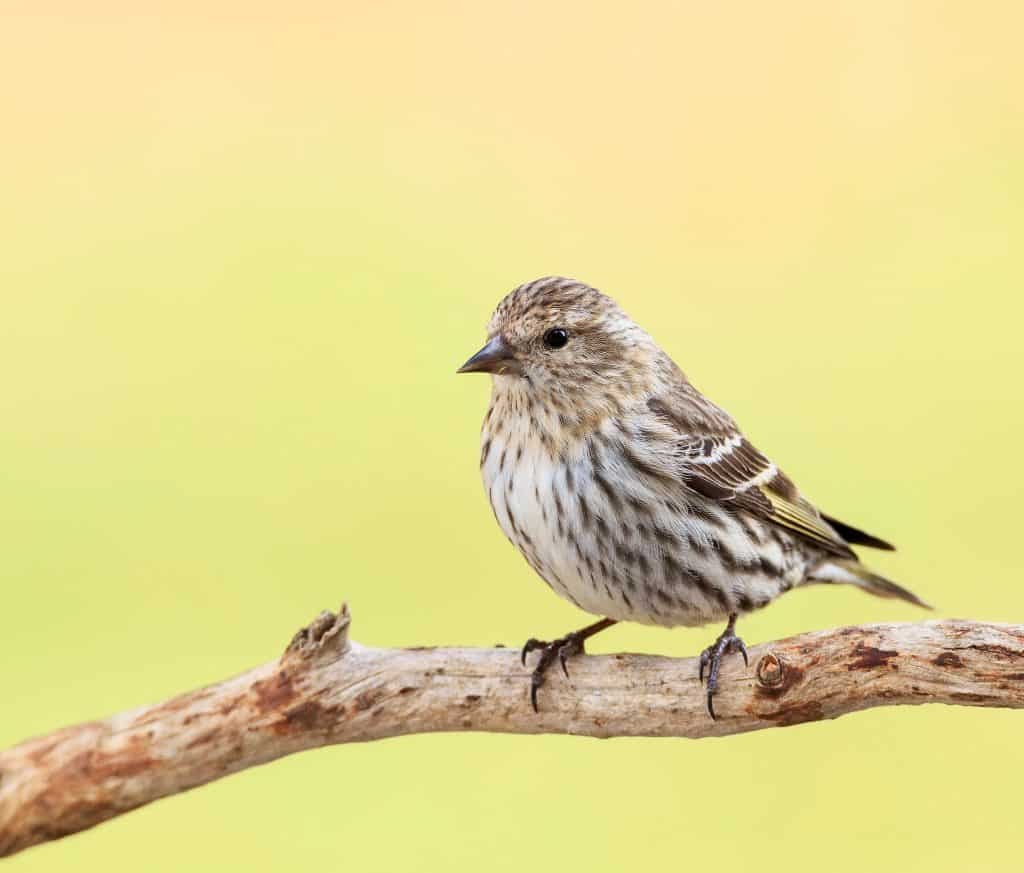
William Whitehead, XC595659. Accessible at www.xeno-canto.org/595659.
Fun Facts:
- These birds have beaks designed for eating seeds and, as the name suggests, they mostly eat seeds from the pine family. As well as seeds, they have also been known to forage for small insects, these insects are usually aphids.
- Pine Siskins are very similar in size to the American Goldfinch, weighing in at a range of 12-18g. Like other finches, they also have small wingspans of 18-22cm.
These are nomadic Canadian breeders who fly south for much of the year to settle in various places throughout the U.S.
While their numbers are concentrated around states like Montana and the Dakotas that have weather like home, they go south to places like Arkansas often enough to have established colonies.
To spot one, look for the bright golden wings on a yellow and black body, with some that replace their yellows with off-white.
Expect to see them foraging on the limbs of pine trees, often in flocks that share space in communities when they land.
Siskins gather near the northwest corner of the state and spread throughout the central areas, generally avoiding the far south.
5. Evening Grosbeak
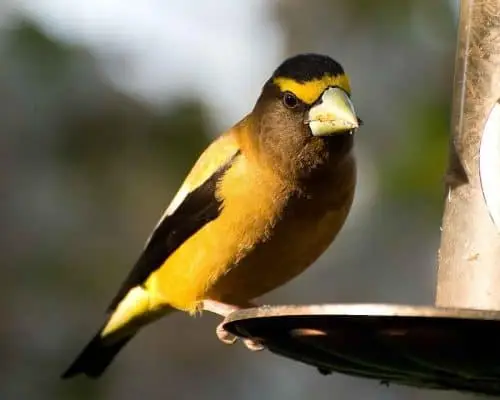
Doug Hynes, XC612610. Accessible at www.xeno-canto.org/612610.
Evening Grosbeaks are a particularly large species of finch known for their stocky build and their strong, but pale colored bills.
Adult males are a bold black color on their heads, that fades into their bright yellow colored underparts.
Their wings are mostly black and accented with white feathers. Females and juveniles are gray with faint white patterns on their wings.
Evening Grosbeaks are occasional visitors spotted throughout Alabama as their population is steadily declining.
These finches prefer to take habitat in woodlands and forested regions at high elevations.
They can typically be seen in the late autumn, winter, and spring months. Grosbeaks tend to break in mid-spring, nesting in high trees or large shrubs.
Flocks of these finches have been known to visit backyard feeders for sunflower seeds.
Evening Grosbeaks can be identified by their descending ‘chee-er’ sound that starts out at a high octave, but then falls in tone.
Conclusion
While there are only a few finch breeds who venture beyond their chosen homes in the western U.S., the ones that do call Arkansas home are abundant, year-round breeders.
It can even be said that the finch’s history as a domesticated house pet makes it an ideal candidate for consistent backyard viewing.
Residents near the mountainous forests on the west side of Arkansas are more likely to spot a finch pecking around in their patios, but they move all across the state at all times of year.

More Articles.
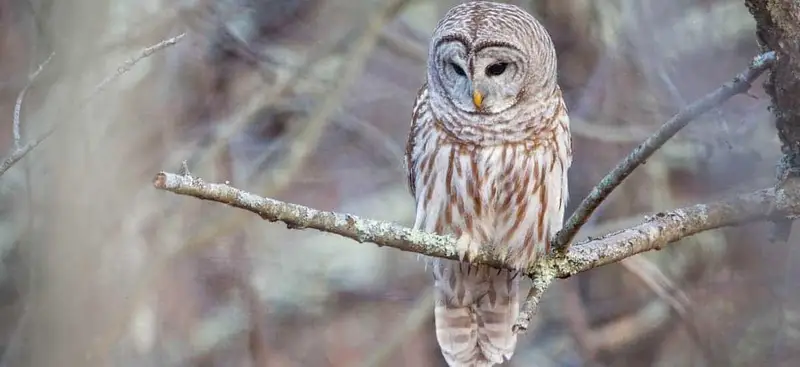
How to attract Owls to your yard?
The best way of attracting Owls to your yard is to offer them a nesting
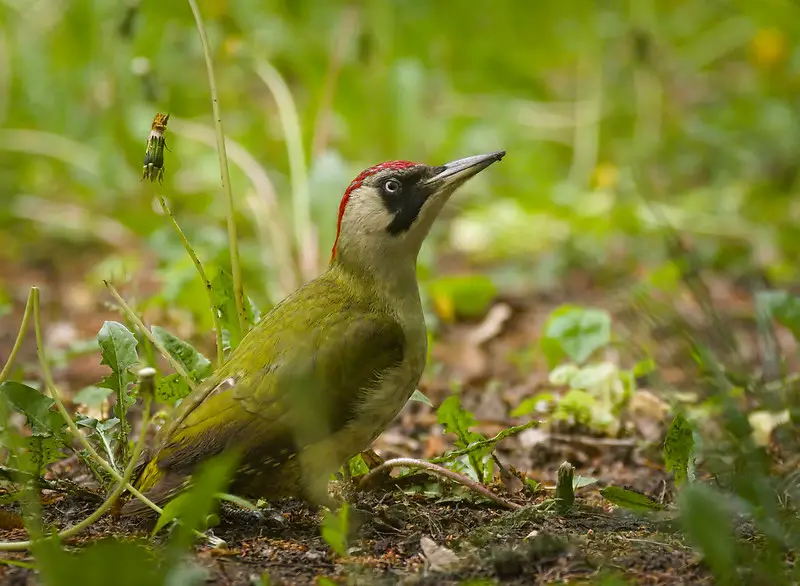
What Woodpeckers can you see in France? (9 Species with Pictures & Sounds)
What woodpeckers can you see in France? There are 9 different species of woodpecker that
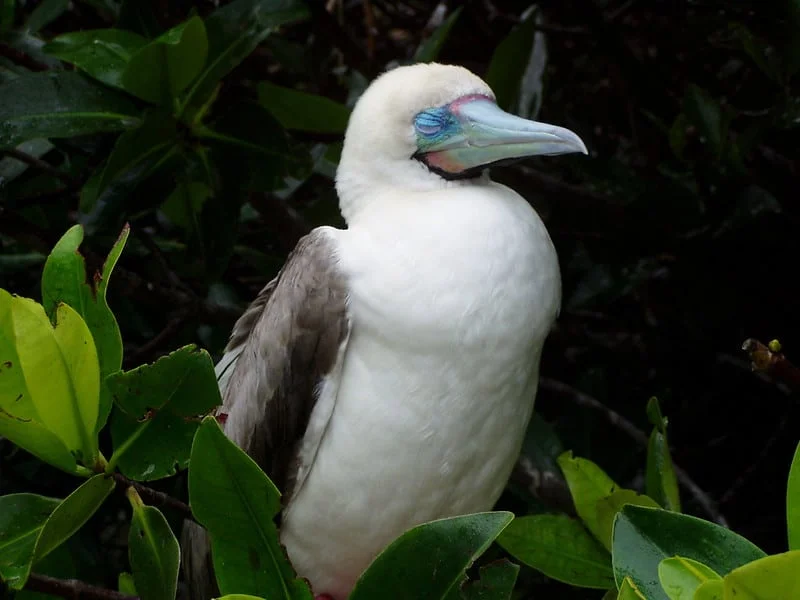
North American Birds with a White Breast (18 Species with Pictures and Sounds)
Canada and America are filled with many wonderful birds with a white breast – in

About Us
We are avid bird-watchers who recently retired, allowing us more time to travel the world. Fortunately, we have managed to visit numerous countries around Europe, Asia, and America. Watching and photographing birds has been a passion for many years and we are making the most of the extra time on our hands!

